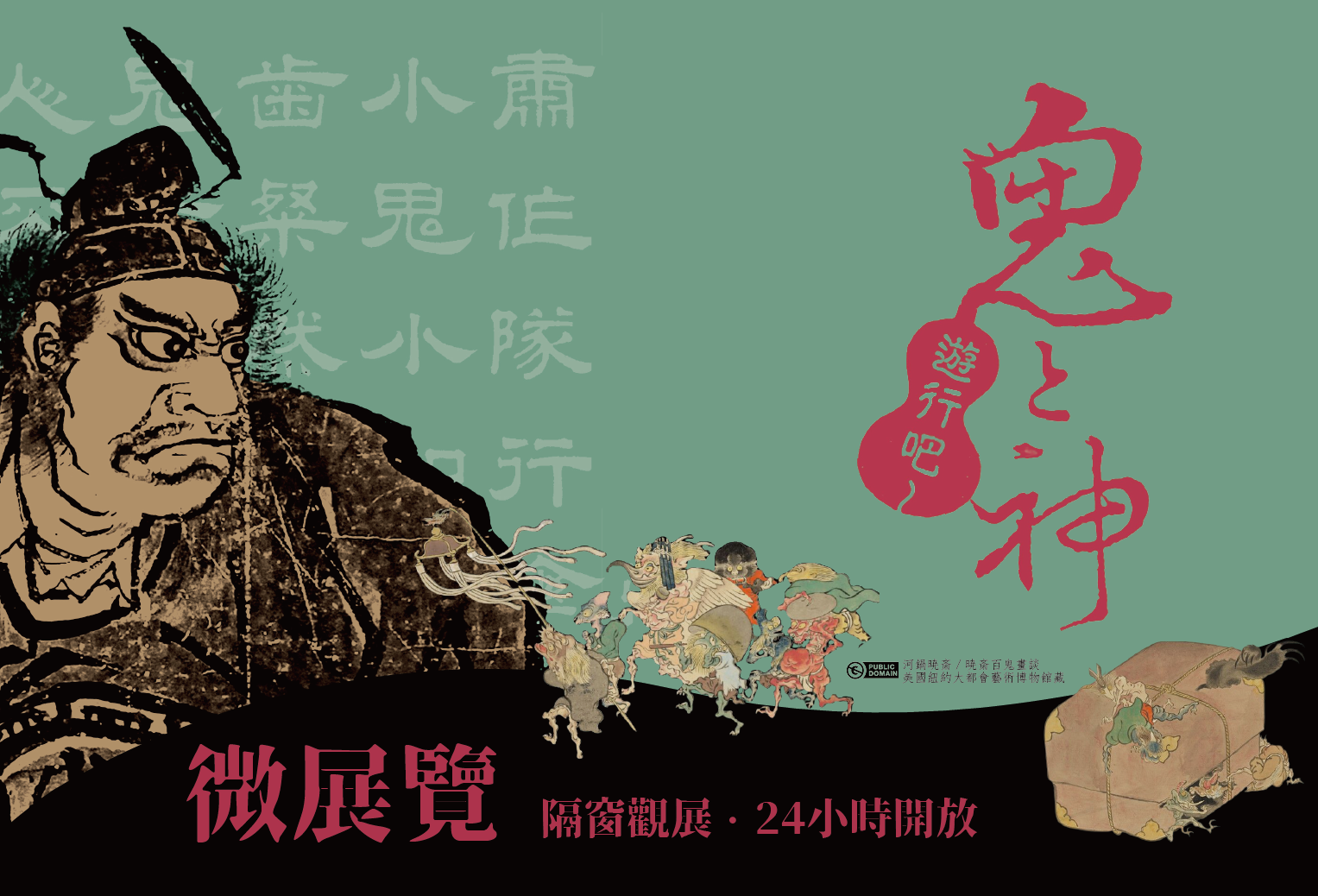文物館【鬼と神遊行吧 A Parade of Ghosts and Gods】精選微展

文物館【鬼と神遊行吧】精選微展
展覽日期:2022.08.22 (一) ~ 10.07 (五)
展覽地點:旺宏館一樓文物館展覽廳
展覽開放時間:隔窗觀展、24小時開放
臺灣與日本都是漢字文化圈的成員,卻有著相當不同的鬼神文化。本展藉由兩件精選的館藏文物,探尋日本文化中遊行人間的鬼神形象,梳理台日在漫漫歷史中交錯的鬼神觀念,提供不同的文化視角。
日本時期以隸書著名的鹿港書家鄭貽林(1859-1927),抄錄日本漢詩〈百鬼夜行圖〉致贈日本友人,不僅搭起交流的橋梁,也勾勒一幅生動的「鬼」形象。日本文化的「鬼」近似中文的「妖怪」,以各類器物形象的「付喪神」為多。江戶時期或更早,妖怪們開始以「百鬼夜行」的概念被命名、作詩文、被圖鑑化,情節驚悚、狀似恐怖,細節卻充滿可愛。
鬼怪可愛,抓妖斬鬼就非首要事。日本也移植了鍾馗信仰,將之納入神道及佛教系統的鍾馗,雖也抓鬼驅邪,但除疫治病的功能更受重視。鬼蓋的鐘馗圖便展現出與漢文化中不太一樣的鍾馗形象風格。
主辦單位:國立清華大學藝術文化總中心.文物館
Though both Taiwan and Japan belong to the Chinese character cultural sphere, they exhibit distinct ghost cultures. This exhibition presents two selected artifacts that explore ghostly imagery in Japanese culture, focusing on the concepts of Hyakki Yagyō (Night Parade of One Hundred Demons) and depictions of Zhong Kui, to illustrate the intertwined ghost beliefs of Taiwan and Japan.
Taiwanese calligrapher Zheng Yilin (1859-1927) from Lukang transcribed the Japanese poem Hyakki Yagyō as a gift to a Japanese friend, vividly portraying the "ghostly" imagery. In the Edo period, Hyakki Yagyō began to be named, written about, and illustrated, creating scenes that, while seemingly terrifying, also captured elements of humor and charm.
Moreover, Japan adapted the belief in Zhong Kui, focusing on his role in healing and exorcism, showcasing a unique interpretation distinct from traditional Chinese culture.